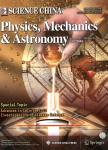版权所有:内蒙古大学图书馆 技术提供:维普资讯• 智图
内蒙古自治区呼和浩特市赛罕区大学西街235号 邮编: 010021

作者机构:School of Physics The University of Western Australia State Key Laboratory of Theoretical Physics Institute of Theoretical Physics Chinese Academy of Sciences The School of Physics & Electronic Engineering Shanxi University Laboratory of All-Solid-State Light Sources Institute of Semiconductors Chinese Academy of Science State Key Laboratroy of Modern Optical Instrumentation Department of Optical Engineering Zhejiang University Laboratory of Optical Physics Institute of Physics Chinese Academy of Sciences Gravitational Wave and Cosmology Laboratory Department of Astronomy Beijing Normal University LIGO Laboratory California Institute of Technology Department of Physics University of Florida Department of Physics West Virginia University National Astronomical Observatory of Japan CSIRO Astronomy and Space Science International Centre for Radio Astronomy Research Curtin University SISSA Astrophysics Sector Institute of Applied Mathematics Academy of Mathematics and Systems Science Chinese Academy of Sciences University of Chinese Academy of Sciences Morningside Center of Mathematics Chinese Academy of Sciences State Key Laboratory of Scientific and Engineering Computing Academy of Mathematics and Systems ScienceChinese Academy of Sciences Department of Mathematics Henan University Department of Mathematics Capital Normal University Department of Geophysics College of the Geology Engineering and Geomatics Chang'an University QUEST Centre of Quantum Engineering and Space-Time Research Leibniz Universitt Hannover Max-Planck-Institut für Gravitationsphysik(Albert Einstein Institut) Aerospace Flight Dynamics Laboratory Beijing Aerospace Control Center Qian Xuesen Laboratory of Launch Vehicle Technology Center for Gravitation and Cosmology Department of Physics Tsing Hua University
出 版 物:《Science China(Physics,Mechanics & Astronomy)》 (中国科学:物理学、力学、天文学(英文版))
年 卷 期:2015年第58卷第12期
页 面:3-43页
核心收录:
学科分类:07[理学] 070201[理学-理论物理] 0702[理学-物理学]
基 金:supported by the US National Science Foundation(Grant No.PHY-0757058) supported by the National Natural Science Foundation of China(Grant Nos.11443008 and 11503003) a Returned Overseas Chinese Scholars Foundation grant,and Fundamental Research Funds for the Central Universities(Grant No.2015KJJCB06) supported by the National Space Science Center,Chinese Academy of Sciences(Grant Nos.XDA04070400 and XDA04077700) Partial supports from the National Natural Science Foundation of China(Grant Nos.11305255,11171329 and 41404019)
主 题:gravitational waves ground based detectors pulsar timing spaced based detectors CMB
摘 要:In the centenary year of Einstein s General Theory of Relativity, this paper reviews the current status of gravitational wave astronomy across a spectrum which stretches from attohertz to kilohertz frequencies. Sect. 1 of this paper reviews the historical development of gravitational wave astronomy from Einstein s first prediction to our current understanding the spectrum. It is shown that detection of signals in the audio frequency spectrum can be expected very soon, and that a north-south pair of next generation detectors would provide large scientific benefits. Sect. 2 reviews the theory of gravitational waves and the principles of detection using laser interferometry. The state of the art Advanced LIGO detectors are then described. These detectors have a high chance of detecting the first events in the near future. Sect. 3 reviews the KAGRA detector currently under development in Japan,which will be the first laser interferometer detector to use cryogenic test masses. Sect. 4 of this paper reviews gravitational wave detection in the nanohertz frequency band using the technique of pulsar timing. Sect. 5 reviews the status of gravitational wave detection in the attohertz frequency band, detectable in the polarisation of the cosmic microwave background, and discusses the prospects for detection of primordial waves from the big bang. The techniques described in sects. 1–5 have already placed significant limits on the strength of gravitational wave sources. Sects. 6 and 7 review ambitious plans for future space based gravitational wave detectors in the millihertz frequency band. Sect. 6 presents a roadmap for development of space based gravitational wave detectors by China while sect. 7 discusses a key enabling technology for space interferometry known as time delay interferometry.